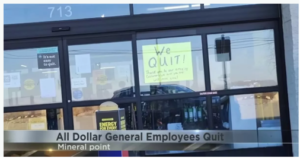Let’s be honest, Customer Service Departments were created, and many still exist today, to problem solve the discrepancies between customer expectations and what a business delivers. Even with due diligence and a preconceived notion of what the customer wants, this mismatch can still occur.
Why Customer Service Departments Exist
Imagine an organization researching potential customers, creating the ideal persona (the perfect customer model), and then mapping key business processes to deliver on anticipated customer expectations. In this ideal scenario, a Customer Service Department should need to exist. Right?
But then the business opened and real people arrived, and some of them didn’t fit the perfect customer model. The customers had diverse needs and were looking for different outcomes than what was originally anticipated. Despite all the efforts by employees to meet customer expectations, the system was not flexible enough to address the kind of personalization customers were looking for. Thus, it was easier and less costly to create a Customer Service Department that works around the system, than to change the system entirely.
How the Customer Service Department has Evolved
Over time, the Customer Service Department has become the place where “problem” customers are sent – those who have needs that can’t be met because of the way business is designed to work. Customer Service often operates with a different set of rules than the other departments in a business. It has more flexibility and permission to work around the system on behalf of the customers. Is it possible to eliminate this “back door” process (going to Customer Service) to allow customers to get what they want? What if you could design the system upfront so that it’s flexible enough to adapt to meet the needs of all customers? This is all possible through Customer Experience Design.
The Growing Popularity of Customer Experience Design
Customer Experience has been getting a lot of press lately. So, what exactly does it entail? Customer Experience (or CX for short) is everything you do for your customers, everything your business procedures do to them, and how it makes them feel. While the Customer Service Department can assist one customer at a time, Customer Experience Design discovers opportunities to develop a system that adapts to the needs of all customers at all times. It adjusts the business operations on the inside in order to deliver more of what the customers want. In other words, it’s about ensuring there’s a match between how a business works and how customers want the business to work. CX Design makes Customer Service an integrated part of all business processes – not a separate department tasked with finding workarounds for systemic problems.
The CX Design Process
Customer Experience Design is the process of guiding organizations through the course of reimagining, rethinking, and reinventing the internal system, and sometimes it means you have to retire the tried and true. It engages employees by taking a holistic approach to designing experiences for the customers. Customer Experience Design tools get organizations from Point A (i.e. “That’s a cool idea!”) to Point B (i.e. “Wow, look how well that works now!”). Successful implementation of the process has yielded many benefits for organizations:
- More profit
- Increased word-of-mouth advertising
- Less frustration on the part of both customers and employees
The Future of Customer Service
Here are some questions worth pondering as we imagine a greater business-customer relationship:
- Should Customer Service continue to be a separate function and place to send customers? …especially now that we are seeing the benefits of CX Design?
- Should Customer Service be embedded at the point of sale and throughout a customer’s journey?
- Or, should Customer Service be done by bots and artificial intelligence?
Or, maybe the answer is all of the above, or some combination of these options.
This is a topic we could talk about forever, or at least in another article. For now, consider integrating Customer Service into all customer touchpoints (moments of truth), from pre-sales activity through the online purchase. Make it an integral part of your business design, instead of accepting things as they are.






